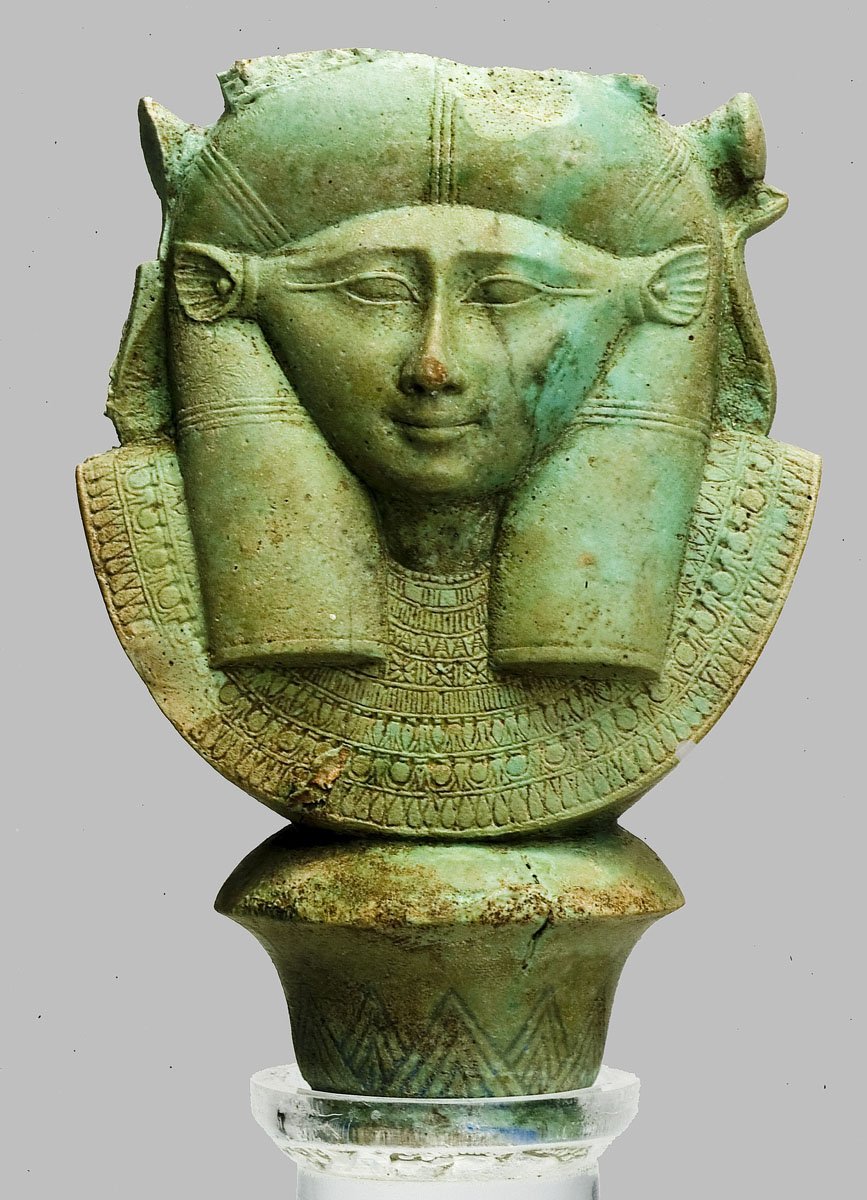
Fragment of a Divine Emblem with the Head of Hathor
Egyptian Art
| Place of production | Saqqara, Egypt |
|---|---|
| Date | 6th century B.C. |
| Object type | tomb equipment |
| Medium, technique | Egyptian faience |
| Dimensions | 18 x 4.7 cm |
| Inventory number | 51.1794 |
| Collection | Egyptian Art |
| On view | Museum of Fine Arts, Basement Floor, Ancient Egypt, Funerary beliefs |
The Egyptians’ view of the afterlife included the key element of wishing to be exempt from work, and the desire to be served and provided for. The first shabti statues from the Middle Kingdom (first third of the 2nd millennium B.C.) were representations of mummified dead people; however, their role was soon extended by the function of taking over the jobs a deceased person had to perform in the afterlife. It was their task to answer the divine call for work, i.e. to take on the work instead of the dead person. The shabtis had their renaissance in the Saite Period (Dynasty XXVI), which ran parallel with a recovery from an artistic nadir (in dynasties XXII-XXV) and included developments such as the expert handling of faience, the elaborate execution and the introduction of new formal elements (use of the plinth, and the back pillar). The tomb of Noferibra-sa-Neith, a high-ranking court official from the Saite Period, was discovered by C.M. Firth in 1929 in Saqqara, in the district of the funerary temple of Userkaf, a king of the Old Kingdom. Since the burial vault had been robbed before the excavation, only 336 faience figures, pressed in four different moulds and subsequently fired, were found instead of the entire set of shabtis. This mummy-shaped shabti wears a beard associated with divinity and a tripartite wig. Only its hands stick out from under the mummy bundle, and the Saite version of Chapter VI of the Book of the Dead is inscribed on its crudely fashioned body with perfectly contoured carved hieroglyphs.
Following István Nagy
This record is subject to revision due to ongoing research.